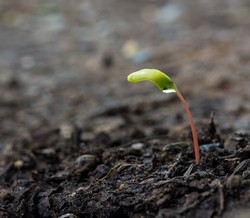Towards better management of forest genetic resources
The role of forests in the fight against climate change needs no further evidence. But while planting a tree is indeed a solution for removing CO2 from the atmosphere, grabbing the first seed at hand won’t necessarily do the trick. Each tree has its own genetic variations, and this diversity is precisely what allows forests to adapt to a changing climate. The good news is that European research projects have already compiled valuable information on FGR over recent decades. The bad news is that their present distribution is not well documented, and this lack of information is preventing the development of informed management strategies by forest managers and policymakers. This is where the FORGER (Towards the Sustainable Management of Forest Genetic Resources in Europe) project comes into play. ‘Currently there is little or no FGR management of European forests,’ says Dr Koen Kramer of Alterra, who coordinated the project. ‘This is regrettable because FGRs are the basis of forest adaptation to environmental changes, brought about by natural processes (evolution) and/or artificial selection. FGRs are essential to tree breeding and assisted migration, which is why we wanted to better understand their past, present and future.’ Completed in February 2016, FORGER provides guidelines and policy briefs to help stakeholders come up with effective management strategies. Harvesting seeds and selecting reproductive material Seed harvesting is the first topic approached by the project, as it stresses that the method employed to harvest seeds significantly affects their genetic quality. ‘A genetically-sustainable seed harvest should optimize the genetic diversity in the seeds obtained and minimize genetic differences between seed harvest and the seed stand,’ reads the dedicated guidelines document. The level of diversity needs to be balanced, so as to ensure that the forest will be able to cope with climate change while avoiding the sky-high costs associated with harvesting all available seeds. The dedicated guidelines include research findings along with global and species-specific recommendations. Among those is the fact that no fewer than 15 trees should be sampled, provided that seed samples per tree are large and that the species are characterised by random mating. Seed harvest from directly neighbouring trees should also be avoided. Along with seed harvesting methods comes the question of which ‘Forest reproductive material’ (FRM) should be favoured to maximise chances of survival in the face of climate change. The project provides further recommendations based on the nature of this change, which varies across regions. It strikes down the prejudice that local provenance is necessarily better, and points to the importance of phenotypic stability. Shaping future policies Another key contribution of the project, closely related to the ones mentioned above, is a policy brief on the origins of FRM. As data is currently very scattered and EU legislation has failed to result in evaluations, monitoring or guidance, FORGER contributes by examining seven tree species and assessing their movement volume (302 million plants from 2004 to 2014), direction and distance. ‘The results generated by FORGER strongly indicate the need to strengthen the implementation of existing regulations and to harmonise data on transfer of FRM across EU Member States,’ Dr Kramer says. Regarding climate change, the project provides recommendations for policy makers based on field and modelling studies: the team notes the importance of stable performance over various environmental conditions, stresses the role of assisted migration to sustain healthy and productive forests, and makes the case for the establishment of new provenance trials. Among the most interesting observations is the fact that climate change might outrun genetic adaptations in the monitored species, and that — whilst a ‘no-management approach’ will often result in higher diversity — active management increases the chances of adaptation. ‘FGRs are critical to having forests adapted to future climate. Currently too much emphasis is being put on species change to adapt to future climate. This will strongly disrupt the forest ecosystem and forests management, creating large uncertainties. Much can be attained with changes in provenances while using the same species,’ Dr Kramer notes. It its third and last policy brief, FORGER analyses the impact of in situ and ex situ conservation of genetic resources. Using databases developed under the EUFGIS and EVOLTREE projects, the team found that few measurements of genetic diversity were available from within the genetic conservation units. It identified conservation gaps — locations where the species examined occur in climatic conditions that are distinct from the climatic conditions found within the genetic conservation units — and concluded that genetic markers available to characterise the genetic diversity of tree species were not associated with their adaptive properties. The outcomes of the project are already generating interest across Europe. ‘The guidelines have been translated to Hungarian, and will be translated to at least German and French, and possibly Italian. Workshops have also been held to disseminate the results in different partner countries,’ says Dr Kramer.
Keywords
Forest genetic resources, forests, climate change, FORGER







